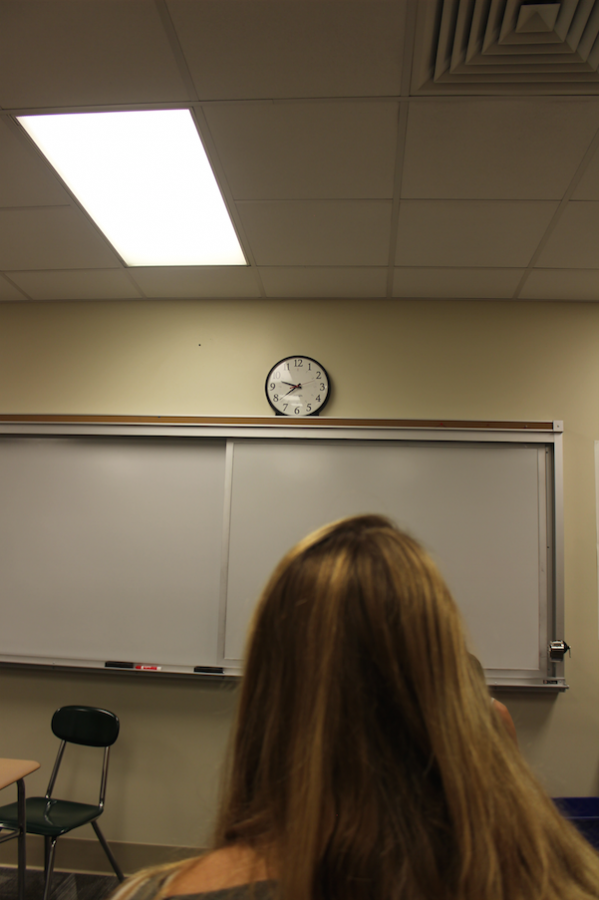New Schedule, New Year
October 9, 2014
At the beginning of the 2014-2015 school year, the students and staff at Clayton High School were presented with a few significant, yet radicals, tweaks to the existing daily schedule. The school day, which previously began at 8:20 a.m., now begins at 8:15 a.m. In addition, the school day ends at 3:05 p.m., four minutes more than its previous counterpart. Classes, which were previously 46 minutes long, are now 47.
Parent teacher conference days were also introduced into the calendar, along with the infamous early release days. Although school has been in session for nearly one month now, and students as well as teachers have learned to accept the schedule change, it is still unclear for most why this whole revamp occurred in the first place.
CHS Sophomore, Gigi Mense says that our school days and classes are longer “because we needed more hours in the school year.” On the other hand, Ross Burstein, a junior, said that the changes in schedule were brought about in order to start summer break sooner.
However, none of these reasons are true. The Calendar Committee of Clayton sent out a survey to parents and staff of the District about two years ago.
“The surveys were about setting priorities for the Calendar Committee,” Clayton High School Principal Dr. Dan Gutchewsky said. Through the survey, parents expressed their desire for the high school to have opportunities for parents to conference with the teachers, like they do at the elementary schools, and at Wydown Middle School, resulting in the additional “Parent Teacher Conference Days” to the school calendar.
Another concern that the Calendar Committee’s survey revealed was the parents wanted all three school levels’ schedules, in terms of instructional time and days off, to be aligned.
“There would be days in which the elementary was off, but not the high school; or the high school was off, but the elementary or middle school wasn’t,” Gutchewsky said. Moreover, the school days at Wydown were eight minutes shorter than the elementariness’ school days; the high school, nine.
Over the course of the year, the middle and high school ended up losing instructional time compared to the elementary. In order to synchronize all three levels, nine minutes were added to the CHS school day, and eight to WMS’s.
Michael Rust, a math teacher at CHS, has pointed out that while the class times has not actually been changed that dramatically, “memorizing the new bell schedules has been an issue.” Which is true, especially for teachers like him who have been on the old schedule for a very long time.
Some students have noticed that since most teachers are not completely accustomed to the new bell times, there are often days in which the teachers plan their lessons around the old bell schedule, thus ending with about three, four, maybe even five, minutes extra. “When this happens, teachers just let us out a few minutes earlier instead,” Adam Bautz, a sophomore and late-start enthusiast, said.
The longer school day was a change that was a well received change in comparison to the early release days. Opinions on the latter are divided, especially among students and teachers.
Some students are angry that they no longer have this one glorious day in which they could sleep for one more hour.
“It was something I used to look forward to,” Mense said, “Since I play a sport in the afternoon, I don’t see the benefits of an early release; I will now have to wait around for two arounds for practice to start instead of sleeping in”.
In contrast, some teachers were pleased with the change. On late start days, while students hibernated in bed for 60 more minutes, teachers were at school, deep in professional development meetings.
“Before, we would be in meetings, then have class directly after. It was really rushed, and stressful,”Rust said.
Additionally, late starts were replaced by early releases for the sake of elementary and middle school parents.
“I used to go to an elementary school that had early dismissals, and it was a pain,” senior Matthew Berrios said. “My parents had to work their schedule around mine.”
Parents that work in the mornings often had a hard time dropping off their younger kids at school on late start days. With the change, supervision for younger children is much easier.
The primary argument made against the change to early release is from student athletes who now have to wait after school for practice to begin.”All our teachers will be engaged in professional development activities [on early release days]. If they’re a coach, they won’t be able to start practice until three,” Gutchewsky said.
Unless, however, your coach is not a district employee; in those cases, practices might be able to start early, and student-athletes would have the opportunity to be home by three.
“Students will basically have to find something to do between 1:00 and 3:00” Gutchewsky said.
The school, and center, will remain open to students on early release days, so thattudents that cannot go home can stay in the school, go to the center, take a walk around downtown Clayton or maybe even grab a bite.
“Kids could also get their homework done in that time!” Rust said, with a humourous grin.







